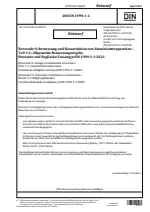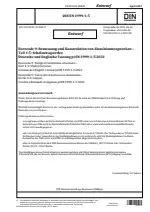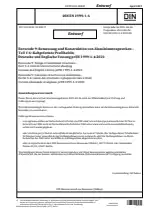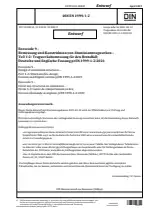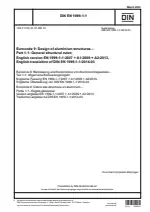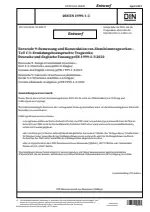Eurocode 9: Design of aluminium structures - Part 1-1: General structural rules
Also Known As:
Eurocode 9, also known as EN 1999-1-1, is a standard that provides guidelines for the design of aluminium structures. It is applicable to both buildings and civil engineering works made of aluminium. The standard focuses on the safety and serviceability of structures and follows the principles and requirements outlined in EN 1990 - Basis of structural design.
EN 1999-1-1 specifically addresses the resistance, serviceability, durability, and fire resistance of aluminium structures. However, it does not cover other aspects such as thermal or sound insulation. To ensure the complete design process, EN 1999-1-1 should be used in conjunction with other relevant European standards, such as EN 1990, EN 1991, EN 1090-1, and EN 1090-3.
The standard provides basic design rules for structures made of wrought aluminium alloys and offers limited guidance for cast alloys. It also recommends minimum limits for material thickness and connection types. For example, it suggests using components with a material thickness not less than 0.6 mm, welded components with a material thickness not less than 1.5 mm, and specific diameters for bolts, pins, rivets, and screws used in connections.
| Descriptors | Aluminium, Aluminium construction, Aluminium structures, Bolts, Buildings, Construction, Construction materials, Definitions, Dimensioning, Durability, Eurocode, Fitness for purpose, Joints, Load capacity, Material properties, Materials, Mathematical calculations, Pins, Properties, Resistance, Rivets, Screwed joints, Specification (approval), Structural engineering drawings, Structures, Tolerances (measurement), Welded joints, Wrought alloys, Wrought products, Compounds, Connections, Permanency, Storage quality, Trusses, Junctions, Endurance tests |
| ICS Codes | 91.010.30 - Technical aspects 91.080.17 - Aluminium structures |
| Language(s) | English + German |
| File Size | 25.2 MB |

